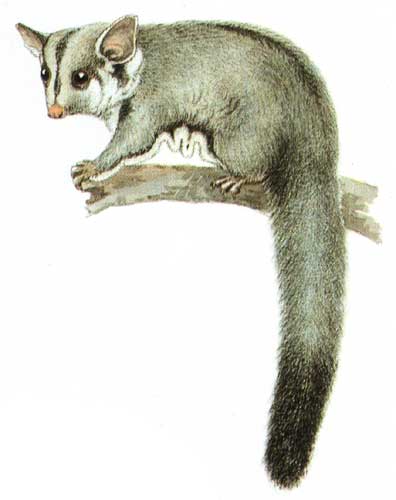Facts About Sugar glider
The sugar glider, or *Petaurus breviceps*, is a small, nocturnal, arboreal marsupial native to mainland Australia, New Guinea, and some Indonesian islands. These charming creatures derive their name from their fondness for sugary foods and their extraordinary ability to glide through the air, akin to flying squirrels. Intriguingly, despite their anatomical and behavioral similarities, sugar gliders and flying squirrels are not closely related; they exemplify convergent evolution.
One of their distinctive features is a gliding membrane called the patagium, which extends from their forelegs to their hindlegs. This remarkable adaptation enables them to glide efficiently between trees, aiding in their search for food and evasion of predators. Sugar gliders thrive in various forest habitats but particularly favor areas abundant with Eucalyptus and Acacia trees.
In terms of taxonomy, the genus *Petaurus*, which includes the sugar glider, is believed to have originated in the early to mid-Miocene period. The sugar glider is unique as the sole *Petaurus* species present in both Australia and New Guinea. Although seven subspecies are recognized, genetic studies imply these distinctions may be less clear-cut than previously thought.
Sugar gliders possess a wealth of fascinating traits and behaviors. They can enter a state of torpor to conserve energy during cold weather and live in social groups or colonies. As omnivores, they have a diverse diet consisting of insects, nectar, acacia gum, and fruits. Female sugar gliders have a pouch for carrying their young and typically give birth to one or two offspring at a time.
These delightful animals have also gained popularity as exotic pets in countries such as the United States and Australia, though regulations on their ownership vary. They require specialized care in captivity, including a balanced diet to prevent health issues like calcium deficiencies and iron storage disease. Although currently listed as "Least Concern" on the IUCN Red List, ongoing conservation efforts remain vital to ensure their protection.
